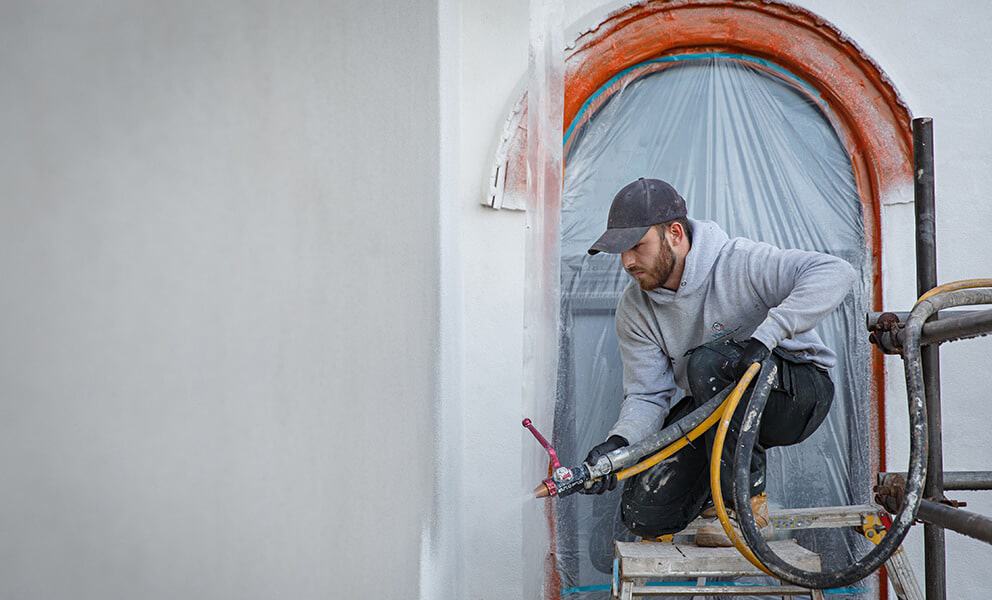
Call our team
01484 442420Find An Applicator
Menu
close

We’re here to make things a little easier. In this post, we’ll discuss the benefits of spray render and how it compares to traditional rendering.
For the uninitiated, render is traditionally applied like plaster to external walls. The mixture is pressed against the wall to make sure it adheres before being evened out for a uniform finish. That’s done in multiple coats to provide sufficient strength and protection.
In contrast, sprayed render is literally sprayed on with a purpose-built machine. This method is much quicker than traditional application as it doesn’t need to be pressed down and smoothed out.
As well as being quicker to apply each coat, sprayed render takes less time to dry. With a machine applying the render, you can achieve thinner layers which don’t require as much time between coats.
There are also some products which only require one coat, compared to the multiple coats with traditional render. Whatever the case, the result is a faster job overall and less disruption to your home or commercial property. It also reduces the amount you’re paying contractors for time and labour.
Traditional rendering is a difficult skill to master. Even experienced rendering contractors can’t guarantee complete uniformity across your walls. In contrast, using a sprayed render solution makes it much easier to get walls completely level and uniform – with the right training, of course.
Another advantage of sprayed render is that it can be used in thin coats to cover textured walls like pebbledash. This allows you to keep the style of pebbledash while adding the weather resistance and durability of a sprayed render. It also means you don’t need to fork out for the costly and time-consuming job of removing pebble dash if it’s looking a bit worse for wear.
The final consideration is how the two options perform. With traditional render application, you’re usually limited to the conventional types of render. Cement and lime are the most old-fashioned varieties, while silicone and acrylic provide a bit more protection and flexibility – but at a cost to the environment.
With spray render, you have the option of a cork-based render which offers superior performance using natural ingredients. You can expect better thermal performance, sound insulation and durability drawing on cork’s natural properties. Even better, the cork-rich bark is stripped without felling trees so it’s completely sustainable.
All in all, spray render is a superior alternative to traditional application on most projects. It can also be used on top of traditional render to enhance both form and function.
At Corksol, we have a network of Approved Applicators who are fully trained to apply SprayCork to the highest standards. To find out more about SprayCork and its various benefits, feel free to contact our team on [email protected].
"*" indicates required fields